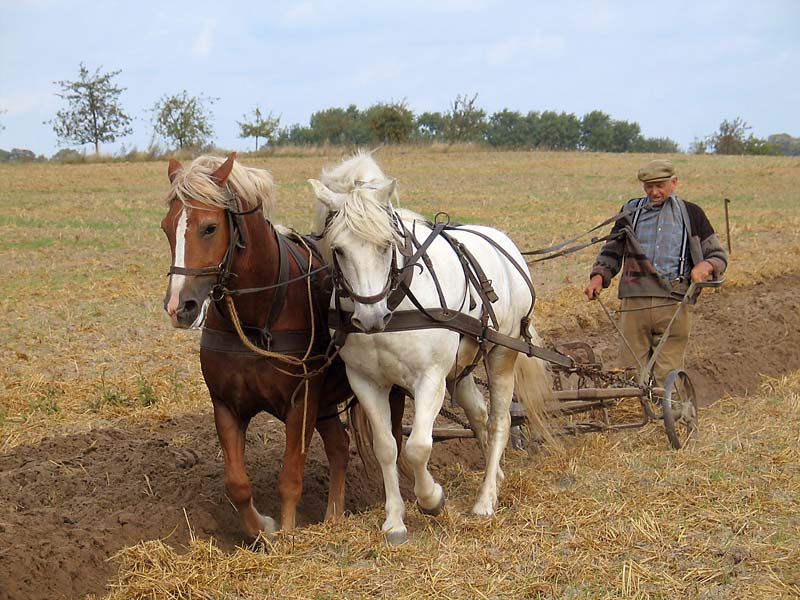The EPA's Efforts to Increase Animal Feedlot Regulations Face a Hurdle: The 2nd Circuit's Waterkeeper Alliance Decision
 In 2003, the EPA took an important step towards implementing the Unified National Strategy for Animal Feeding Operations (“Unified Strategy for AFOs”) when it promulgated new Clean Water Act regulations for animal feedlots. One of the main proposals in the Unified Strategy for AFOs was to require the 5% of animal feedlots that pose the greatest environmental threat to adopt Comprehensive Nutrient Management Plans (CNMPs). To this end, the EPA’s 2003 regulations required all “concentrated animal feeding operations” or “CAFOs” to adopt nutrient management plans.
In 2003, the EPA took an important step towards implementing the Unified National Strategy for Animal Feeding Operations (“Unified Strategy for AFOs”) when it promulgated new Clean Water Act regulations for animal feedlots. One of the main proposals in the Unified Strategy for AFOs was to require the 5% of animal feedlots that pose the greatest environmental threat to adopt Comprehensive Nutrient Management Plans (CNMPs). To this end, the EPA’s 2003 regulations required all “concentrated animal feeding operations” or “CAFOs” to adopt nutrient management plans.The EPA explained that its 2003 CAFO regulations were merely part of a larger strategy for reducing water pollution from animal feedlots:
This improved regulatory program is…designed to support and complement the array of voluntary and other programs implemented by the United States Department of Agriculture (USDA), EPA and States that help the vast majority of smaller animal feeding operations not addressed by this rule. This rule is an integral part of an overall federal strategy to support a vibrant agricultural economy while at the same time taking important steps to ensure that all animal feeding operations manage their manure properly and protect water quality.Federal Register, 68 F.R. 7176.
The EPA’s 2003 CAFO regulations incorporated many of the proposals contained in the Unified Strategy for AFOs. The EPA’s 2003 CAFO regulations increased the number of animal feedlots being regulated to an estimated 15,500 animal feedlots and required all of these animal feedlots to adopt nutrient management plans. Federal Register, 68 F.R. 7176. The nutrient management plans required by the EPA’s 2003 regulations were to be fairly comprehensive. Although the nutrient management plans would only address two water pollutants (nitrogen and phosphorus), the nutrient management plans would incorporate a variety of approaches for reducing water pollution. The EPA’s 2003 regulations required nutrient management plans to include field-specific protocols for applying manure to fields, schedules for testing the nutrient content of manure and soil, and plans to adopt land use practices to reduce the quantities of pollutants transported from fields to waterways (e.g. plans to plant buffer strips, comply with setback requirements, etc.). 40 C.F.R. § 412.4(c).
The EPA’s 2003 CAFO regulations did not include the Unified Strategy for AFOs’ suggestions for ensuring that nutrient management plans would be effective at reducing water pollution. Specifically, the EPA’s 2003 regulations did not require nutrient management plans to include implementation schedules and did not require nutrient management plans to be developed or approved by certified specialists. Instead, CAFO owners and operators could comply with the regulations by developing and implementing nutrient management plans themselves.
 On February 28, 2005, the Second Circuit Court of Appeals put a bit of a wrench in the EPA’s plans to increase animal feedlot regulations when the Court announced its decision in the case of Waterkeeper Alliance, Inc. v. United States Environmental Protection Agency, 399 F.3d 486 (2d Cir.2005). The biggest blow to the EPA's plans was the Court’s decision that the Clean Water Act does not authorize the EPA to regulate all CAFOs. The EPA had argued that it had the authority to regulate all large animal feedlots* because all large animal feedlots have the potential to discharge pollutants into waterways. The EPA adopted a presumption that large animal feedlots were discharging pollutants and gave these feedlots the option of proving that they were not in fact discharging pollutants. The Second Circuit rejected the EPA’s argument, holding that the EPA only has the authority to regulate animal feedlots that actually discharge pollutants into waterways.
On February 28, 2005, the Second Circuit Court of Appeals put a bit of a wrench in the EPA’s plans to increase animal feedlot regulations when the Court announced its decision in the case of Waterkeeper Alliance, Inc. v. United States Environmental Protection Agency, 399 F.3d 486 (2d Cir.2005). The biggest blow to the EPA's plans was the Court’s decision that the Clean Water Act does not authorize the EPA to regulate all CAFOs. The EPA had argued that it had the authority to regulate all large animal feedlots* because all large animal feedlots have the potential to discharge pollutants into waterways. The EPA adopted a presumption that large animal feedlots were discharging pollutants and gave these feedlots the option of proving that they were not in fact discharging pollutants. The Second Circuit rejected the EPA’s argument, holding that the EPA only has the authority to regulate animal feedlots that actually discharge pollutants into waterways. The Second Circuit also held that the EPA has to ensure compliance with the requirement that animal feedlots develop and implement nutrient management plans. The EPA’s 2003 regulations merely required CAFOs to keep nutrient management plans on file and to procure them for EPA officials if requested. The Second Circuit held that this was not sufficient to ensure that CAFOs were developing and implementing effective nutrient management plans.
Lastly, the Second Circuit held that the EPA has to include the terms of nutrient management plans in Clean Water Act permits. The EPA’s 2003 regulations stated that Clean Water Act permits would simply require CAFOs to develop and implement nutrient management plans. The Second Circuit held that this was insufficient, violating the Clean Water Act’s text. According to the Second Circuit, the terms of nutrient management plans were “effluent limitations” and the Clean Water Act required all effluent limitations to be included in Clean Water Act permits.
The EPA is currently in the process of revising its rules for regulating pollution from animal feedlots. The EPA should be able to revise its 2003 regulations to address many of the concerns raised by the Second Circuit’s Waterkeeper Alliance decision. However, after Waterkeeper Alliance, it will be difficult for the EPA to argue that it has the authority to regulate the 5% of animal feedlots that pose the greatest environmental threat -- one of the main proposals in the Unified Strategy for AFOs. Congress may need to amend the Clean Water Act to give the EPA the authority to implement this central provision in the Unified Strategy for AFOs.
*Note: The EPA defined large animal feedlots ("large CAFOs") as animal feedlots that raise more than 700 dairy cows, more than 1,000 cattle other than dairy cows, more than 2,500 55 lb. swine, more than 10,000 <55 lb. swine, more than 30,000 laying hens or broilers (use of liquid manure handling system), or more than 125,000 chickens (use of other than liquid manure handling system). 40 C.F.R. § 122.23(b)(4).










0 Comments:
Post a Comment
<< Home